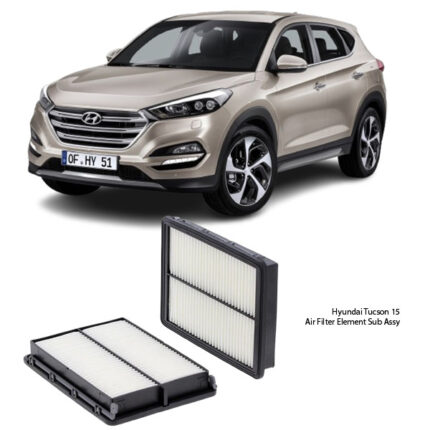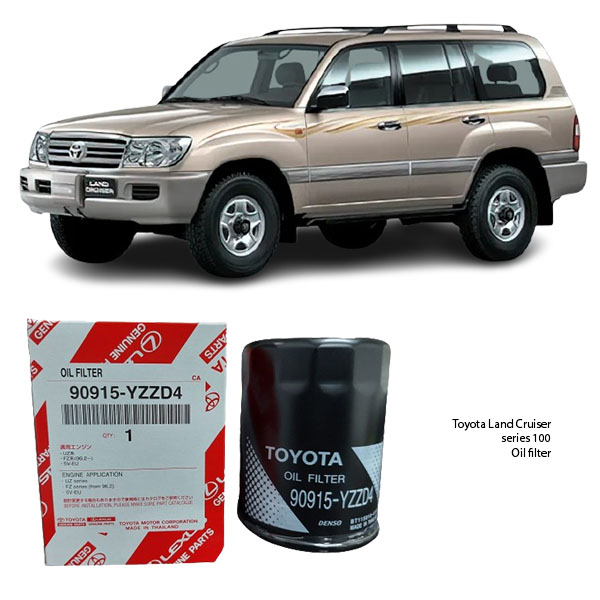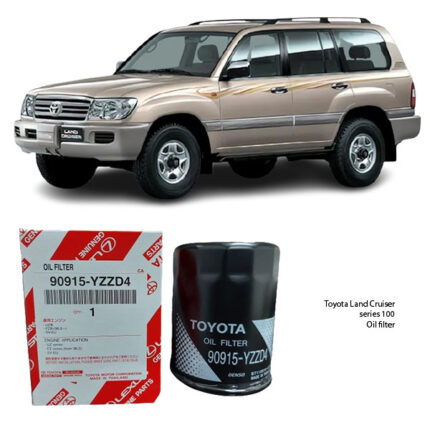Get Toyota Land Cruiser 100 series Oil Filter Assy 90915-YZZD4 in Kenya
The Oil Filter Assembly is a critical component in an engine’s lubrication system. It ensures that clean oil circulates through the engine, keeping it properly lubricated and free from contaminants. Without a high-quality oil filter, dirt, debris, and metal particles can damage the engine, leading to reduced performance, increased wear, and even catastrophic failure.
In this guide, we’ll cover:
What an oil filter assembly is
How it works
Types of oil filters
Signs of a clogged oil filter
How to replace an oil filter
Maintenance tips
OEM vs. aftermarket oil filters
By the end, you’ll understand why regular oil filter maintenance is crucial for engine health and longevity.
1. What is an Oil Filter Assembly?
An oil filter assembly consists of:
- An oil filter (traps contaminants from engine oil)
- A filter housing (holds the filter element)
- An anti-drain-back valve (prevents oil from draining out when the engine is off)
- A bypass valve (allows oil to flow if the filter is clogged)
The main job of the oil filter assembly is to remove contaminants like:
Dirt and dust
Metal shavings from engine wear
Carbon deposits from combustion
Sludge and varnish buildup
Without a properly working oil filter, these contaminants can damage engine components, leading to premature wear and possible engine failure.
2. How Does an Oil Filter Work?
The engine oil must stay clean and free of debris for optimal performance. Here’s how the oil filter assembly ensures this:
Step 1: Oil Circulation Begins
As the engine runs, oil is pumped from the oil pan through the filter assembly before reaching key engine components.
Step 2: Oil Passes Through the Filter Media
The oil filter contains a fine mesh of synthetic or cellulose fibers that trap contaminants while allowing clean oil to flow through.
Step 3: Anti-Drain-Back Valve Prevents Oil Drainage
The anti-drain-back valve stops oil from flowing backward when the engine is turned off, ensuring immediate lubrication upon startup.
Step 4: Bypass Valve Activates If the Filter is Clogged
If the filter becomes completely blocked, the bypass valve allows unfiltered oil to reach the engine to prevent damage from oil starvation.
A clogged filter reduces oil flow, causing poor lubrication, overheating, and increased wear on engine components.
3. Types of Oil Filters
Different vehicles require different types of oil filters, depending on engine type and usage.
3.1. Primary (Full-Flow) Oil Filters
Most common type in modern vehicles
Filters 100% of engine oil before it circulates
Essential for cold starts when oil is thicker
3.2. Secondary (Bypass) Oil Filters
Used in heavy-duty diesel engines
Filters a small portion of oil at a time
Provides extra filtration for long-lasting engine protection
3.3. Spin-On vs. Cartridge Filters
Spin-On Filters – Metal canister with an integrated filter element (easy to replace)
Cartridge Filters – Separate replaceable filter element inside a reusable housing (more eco-friendly)
3.4. Magnetic Oil Filters
Uses a magnet to trap tiny metal particles
Often combined with traditional filtration media
3.5. Synthetic Oil Filters
Designed for synthetic oil and high-performance engines
Offers better filtration and longer service life
For most drivers, an OEM-quality full-flow filter is the best choice.
4. Symptoms of a Clogged Oil Filter
A clogged or failing oil filter can cause serious engine issues. Watch out for these signs:
Low Oil Pressure Warning Light – Restricted oil flow triggers dashboard warnings.
Engine Overheating – Poor lubrication increases friction and heat.
Ticking or Knocking Noises – Lack of oil causes metal parts to rub together.
Dirty Exhaust Smoke – Poor filtration leads to excessive carbon buildup.
Reduced Fuel Efficiency – Increased friction makes the engine work harder.
Ignoring these signs can lead to costly engine repairs or even total failure.
5. How to Replace an Oil Filter (DIY Guide)
Replacing an oil filter is a simple and essential maintenance task.
5.1 Tools & Materials Needed
New oil filter (OEM or high-quality aftermarket)
Fresh engine oil (check owner’s manual for the right type)
Oil filter wrench
Drain pan (to catch old oil)
Gloves & rags
5.2 Step-by-Step Process
Warm Up the Engine – Run the engine for 5 minutes to thin the oil.
Lift the Car & Secure It – Use jack stands for safety.
Drain the Old Oil – Place the drain pan under the oil plug and remove it.
Remove the Old Filter – Use an oil filter wrench to unscrew it.
Lubricate the New Filter Gasket – Apply a small amount of oil to the gasket for a proper seal.
Install the New Filter – Screw it in by hand until snug, then tighten slightly with the wrench.
Refill with Fresh Oil – Pour new oil into the engine.
Check Oil Levels & Run the Engine – Let the engine run for a few minutes, then check for leaks.
Always dispose of used oil and filters properly—never pour oil down the drain!
6. Maintenance Tips for Longer Engine Life
To keep your oil filter working efficiently:
Change the oil & filter regularly – Follow the manufacturer’s interval (typically 3,000 – 10,000 miles).
Use high-quality oil – Synthetic oil provides better lubrication and protection.
Inspect for leaks – Check around the filter and drain plug.
Don’t over-tighten the filter – Too much pressure can damage the gasket.
Replace with OEM or premium aftermarket filters – Cheap filters may not provide adequate filtration.
Proper oil filter maintenance ensures a smooth-running engine and prevents costly repairs.
7. OEM vs. Aftermarket Oil Filters
7.1. OEM Oil Filters
Designed specifically for your vehicle
Ensures optimal filtration and fit
Typically lasts longer than cheap aftermarket filters
Can be more expensive
7.2. Aftermarket Oil Filters
Available in different quality levels
Some premium brands offer better filtration than OEM
More affordable than OEM options
Not all aftermarket brands meet OEM specifications
Stick with reputable brands like Bosch, Mobil 1, K&N, or OEM filters for reliable performance.
Follow us on Facebook for more parts.





Reviews
Clear filtersThere are no reviews yet.